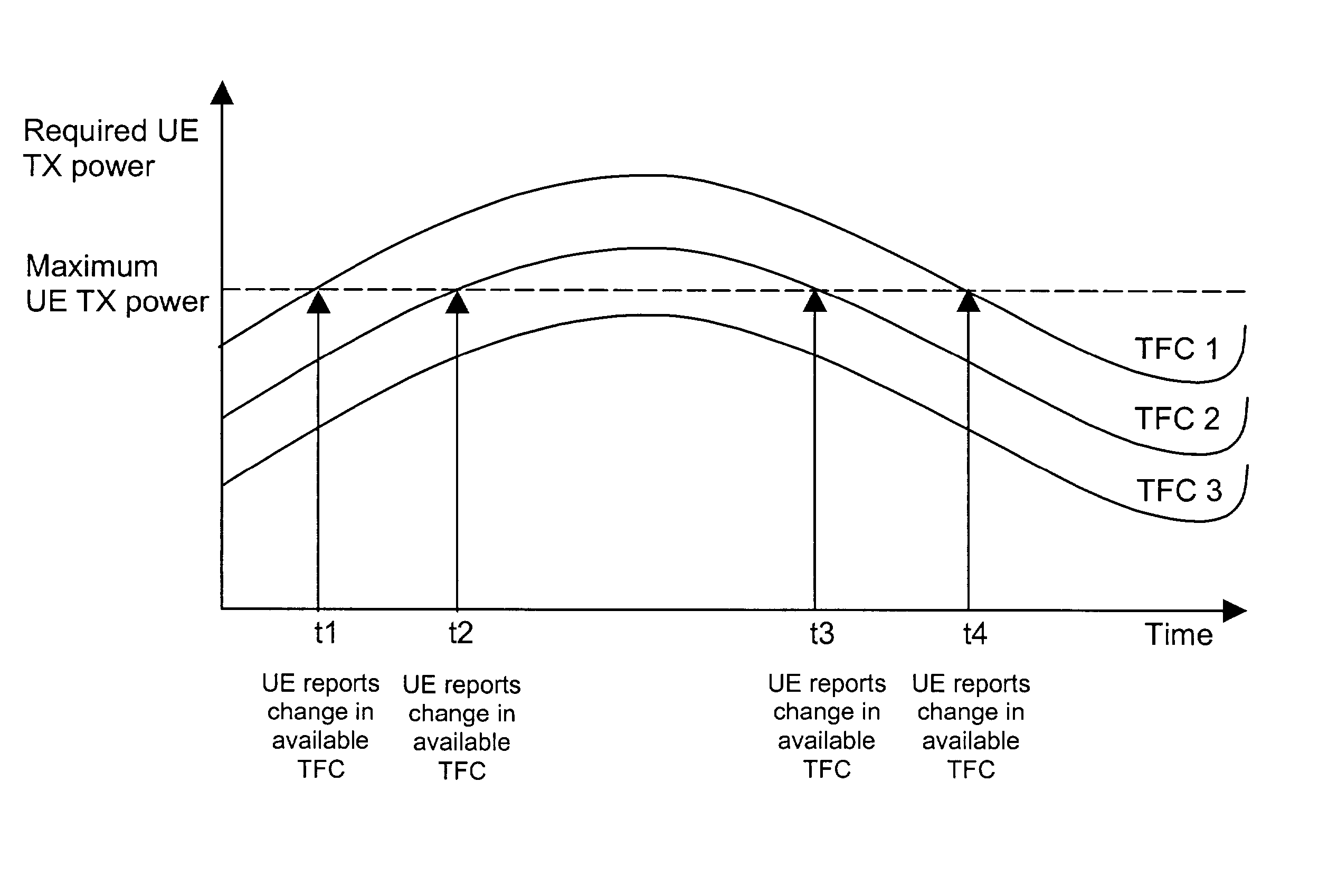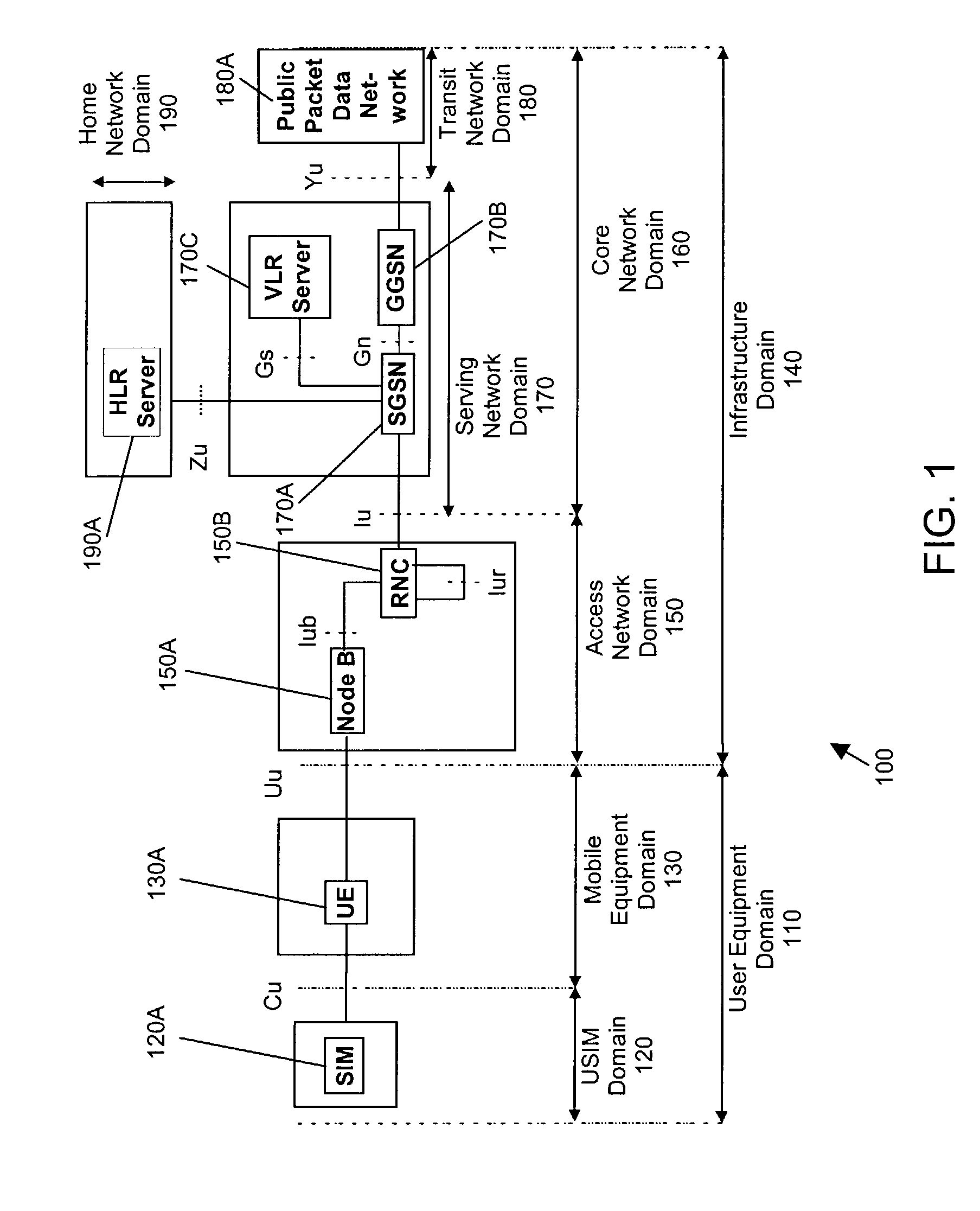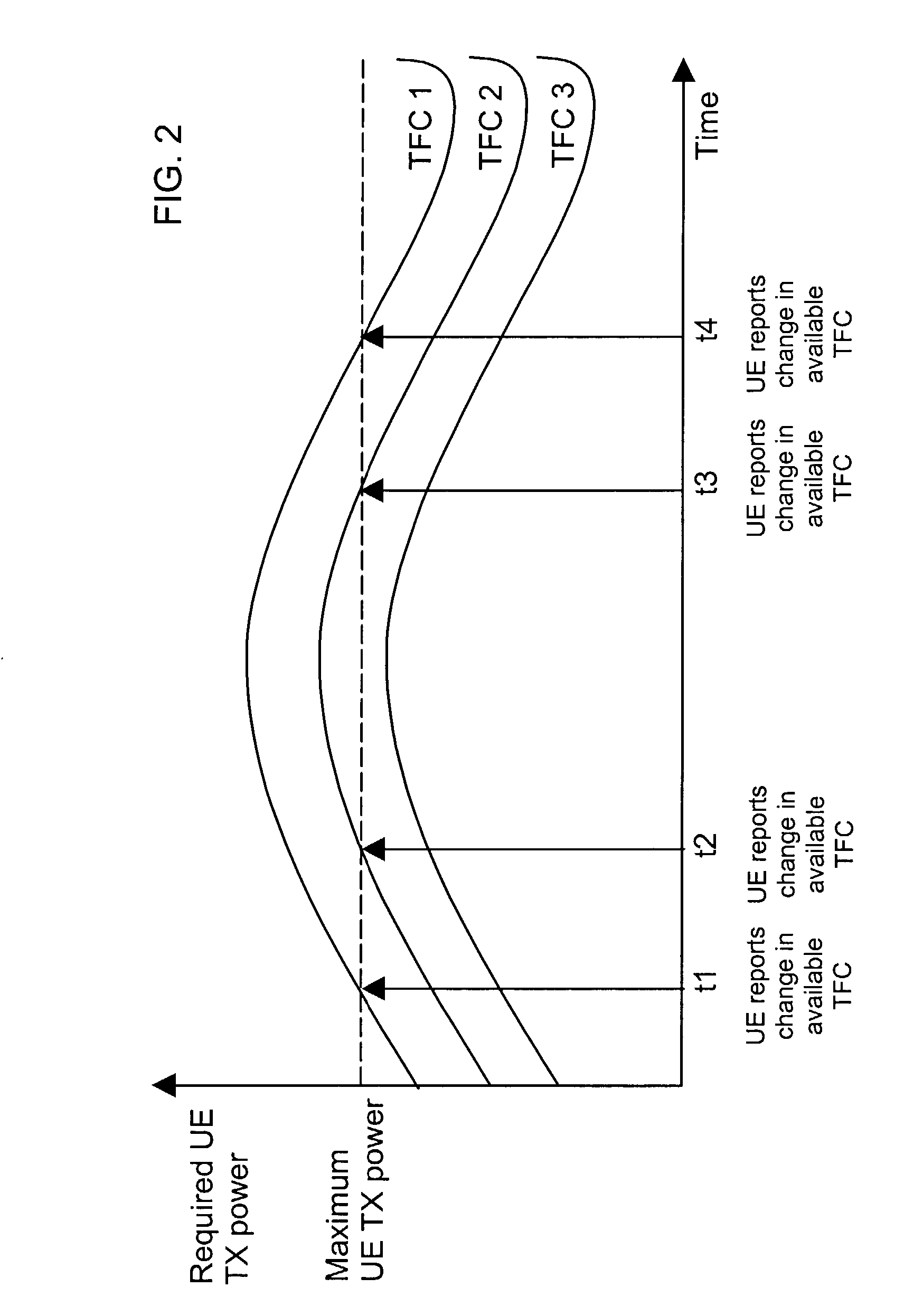System and method for channel transport format allocation in a wireless communication system
a wireless communication system and channel transport technology, applied in data switching networks, instruments, frequency-division multiplexes, etc., can solve the problems of not being able to reallocate phyiscal resources, prior art systems do not allow these two techniques to be used, etc., to reduce signalling overhead
- Summary
- Abstract
- Description
- Claims
- Application Information
AI Technical Summary
Benefits of technology
Problems solved by technology
Method used
Image
Examples
Embodiment Construction
[0015] Referring firstly to FIG. 1, a typical, standard UMTS network (100) is conveniently considered as comprising: a user equipment domain (110), made up of a user SIM (USIM) domain (120) and a mobile equipment domain (130); and an infrastructure domain (140), made up of an access network domain (150), and a core network domain (160), which is in turn made up of a serving network domain (170) and a transit network domain (180) and a home network domain (190).
[0016] In the mobile equipment domain (130), user equipment UE (130A) receives data from a user SIM (120A) in the USIM domain 120 via the wired Cu interface. The UE (130A) communicates data with a Node B (150A) in the network access domain (150) via the wireless Uu interface. Within the network access domain(150), the Node B (150A) communicates with an RNC (150B) via the Iub interface. The RNC (150B) commmunicates with other RNC's (not shown) via the Iur interface. The RNC (150B) communicates with a SGSN (170A) in the serving ...
PUM
 Login to View More
Login to View More Abstract
Description
Claims
Application Information
 Login to View More
Login to View More - R&D
- Intellectual Property
- Life Sciences
- Materials
- Tech Scout
- Unparalleled Data Quality
- Higher Quality Content
- 60% Fewer Hallucinations
Browse by: Latest US Patents, China's latest patents, Technical Efficacy Thesaurus, Application Domain, Technology Topic, Popular Technical Reports.
© 2025 PatSnap. All rights reserved.Legal|Privacy policy|Modern Slavery Act Transparency Statement|Sitemap|About US| Contact US: help@patsnap.com



